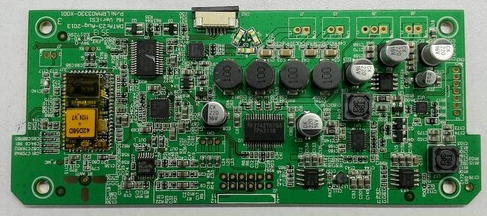I feel that under the development of global science and technology, the earth's resources are facing a crisis of gradual catastrophe. In addition to the implementation of smart manufacturing and environmental protection, in the face of the future, resource recycling is an important issue that cannot be delayed. For this reason, TPCA leads the world in its first release. "Taiwan's circuit board industry circular economy strategy development blueprint", TPCA Chairman Li Changming gave a speech saying that circular economy issues have become one of the development strategies of various countries in recent years. The current situation and dilemma of the original cycle are pointed out one by one. From the perspectives of technical, regulatory, and commercial aspects, it summarizes the road to a circular economy in the future, and continues to work hard for the transformation of Taiwan's PCB industry into a sustainable security industry.
The PCB circular economy strategy blueprint inventory takes the raw materials,

wastes, and the types and flow directions of the production equipment related to the production process as the inventory direction. According to the current inventory, there are a total of 22 PCB manufacturing processes, and a total of 48 waste items were counted. Solid waste accounted for 52% (25 items), liquid waste 46% (22 items), and gas waste 2% ( 1 item). There are currently 39 items that can be recycled and reused (81% of the total), while there are only 10 items in the industry cycle (20.8% of the total). It shows that most of the resource reuse is still in the external cycle, and there are still many difficulties unable to realize the value of the circular economy in the industry.
The PCB circular economy strategy blueprint also proposes to increase the proportion of waste water and waste chemical liquid resources from the perspectives of technical, regulatory, and commercial aspects. Although the proportion of solid recycling resources is high, there is still room for improvement and improvement, and the benefits of circular economy are maximized. Key topics, and divide the implementation benefits of circular economy into various manifestations of the three stages of circular economy 1.0 to circular economy 3.0. The realization of PCB Circular Economy 3.0 still requires cross-domain cooperation between industry, government, academia, and research, revision of regulations, verification of resource products, and market export to solve the problem of limited global resources, coexist with the environment forever, and leave a beautiful environment for the next generation.
In 2014, the Taiwan Gulf Circuit Board Association (TPCA) published a white paper on the development of the circuit board industry, setting "environmental protection" as one of the three major visions of the industry, and is committed to promoting the industry to enhance its green competitiveness. In the past few years, TPCA has successively completed the Guidelines for the Cleaner Production Evaluation System for the Printed Circuit Board Industry, and established the Circuit Board Environmental Charity Foundation (TPCF). Perform social responsibilities and professional division of labor with the association. TPCA and TPCF work together to realize the specific actions of PCB industry committed to environmental friendliness in an all-round way, and gradually extend the enhancement of safety from the perspective of environmental protection, and actively build a platform with industry, government, academia and research, and look forward to using the "Taiwan PCB Industry Circular Economy Strategy Development Blueprint "Releases the strategy of driving more industries to independently develop a circular economy, realizing the vision of a sustainable industry in which green manufacturing reduces environmental impact, and achieving the goal of a green competitive industry in reducing waste emissions and increasing resource reuse.